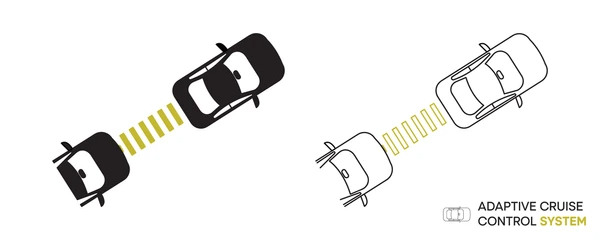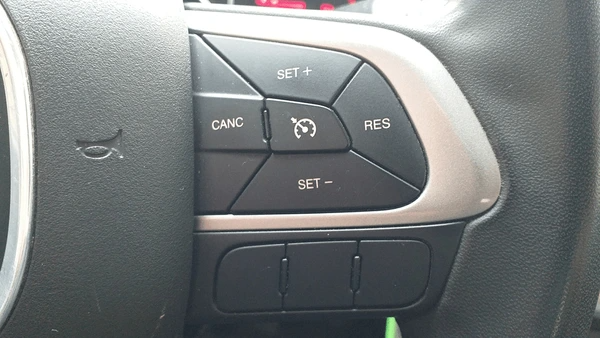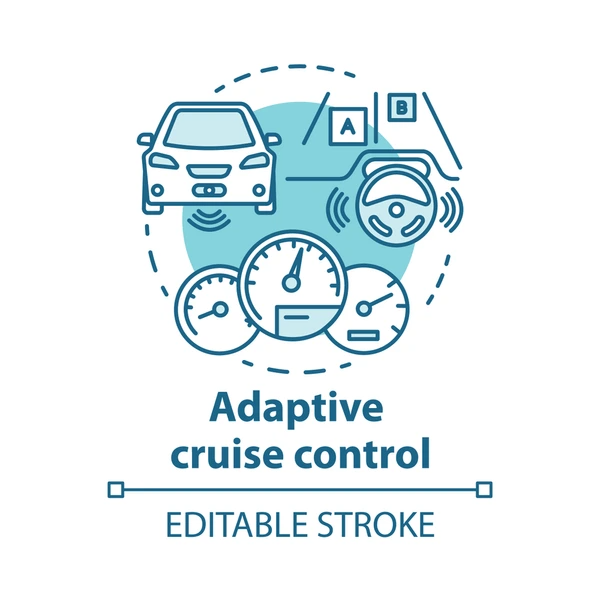
Adaptive Cruise Control (ACC) is a modern automotive feature that automatically adjusts a vehicle’s speed to maintain a safe distance from the car ahead. Unlike traditional cruise control, which keeps your car at a constant speed, ACC uses advanced sensors, radar, and AI algorithms to react in real time to changing traffic conditions.
This article explains how adaptive cruise control works, the technology behind it, and how it’s shaping the future of driver-assist systems and autonomous driving.
How does adaptive cruise control work? Eureka Technical Q&A explains how sensors, radar, and AI work together to automatically adjust your vehicle’s speed—keeping a safe distance and making driving smarter and safer.
What Is Adaptive Cruise Control?
Adaptive Cruise Control is a driver-assist system that automatically maintains a preset speed while also adapting to surrounding traffic by slowing down or speeding up as needed. It enhances comfort during long highway drives and improves safety by minimizing the need for constant braking and acceleration.

Core Components of Adaptive Cruise Control
Adaptive cruise control relies on a combination of hardware sensors and software algorithms to detect and respond to vehicles in front. Here are the main components:
Sensors
ACC systems rely on a combination of sensors to detect the vehicle’s surroundings. Common sensors include radar, lidar, cameras, and infrared sensors. These sensors work together to monitor the distance, speed, and position of the vehicle relative to the vehicle ahead and other objects on the road.
Electronic Control Unit (ECU)
The ECU is the brain of the ACC system, processing data from the sensors and making decisions on how to adjust the vehicle’s speed. It uses algorithms to determine the appropriate response, such as accelerating or braking, to maintain a safe following distance.
Actuators
These components execute the control commands sent by the ECU. In ACC systems, actuators are typically associated with the throttle and brake systems. They adjust the engine throttle position and braking force to regulate the vehicle’s speed.
User Interface
Many ACC systems include a user interface that allows drivers to set preferences, such as desired speed and following distance. This interface may be located on the dashboard or integrated into the vehicle’s infotainment system.
Communication Systems
Some advanced ACC systems can communicate with other vehicles (V2V) or infrastructure (V2I) to enhance safety and traffic flow. This communication can provide additional information about traffic conditions and obstacles ahead.
How Adaptive Cruise Control Works

- Sensor Input: ACC systems use a combination of sensors to detect the vehicle’s surroundings. The most common sensors include radar, lidar, and cameras. Radar is particularly popular due to its ability to provide accurate distance and speed measurements, even in adverse weather conditions.
- Data Processing: The sensor data is processed to identify the vehicle ahead and determine the distance and relative speed. This information is used to assess the potential risk of collision and to decide on the appropriate action.
- Decision Making: The system’s electronics evaluate the data to determine the best course of action. This involves assessing the likelihood of a collision and deciding whether to alert the driver, adjust the vehicle’s speed, or take full control of the braking system.
- Speed Adjustment: If the system detects that the vehicle is getting too close to the one ahead, it will automatically reduce the speed to maintain a safe distance. Conversely, if the vehicle ahead speeds up or changes lanes, the ACC will resume the set speed.
- Braking and Acceleration: In some advanced systems, ACC can also handle stop-and-go traffic by bringing the vehicle to a complete stop if necessary and accelerating back to the set speed when traffic clears.
- Driver Alerts: In some cases, the system may alert the driver with visual or auditory signals if it detects aggressive driving or other potentially dangerous situations.
- System Integration: Modern ACC systems often integrate with collision warning and lane-keeping assist to create a comprehensive safety system.
Safety Features and AI Enhancements

Many ACC systems are part of larger ADAS (Advanced Driver Assistance Systems). Here’s how AI enhances ACC:
- Object classification: AI helps distinguish between cars, trucks, motorcycles, and stationary objects
- Predictive behavior: Systems can anticipate merging traffic or cut-ins
- Machine learning: Some systems adapt to driving habits over time for smoother performance
Benefits of Adaptive Cruise Control
- Reduces driver fatigue on long trips
- Improves traffic flow by minimizing sudden braking
- Enhances safety by maintaining consistent following distances
- Supports semi-autonomous driving features in modern vehicles
Limitations to Keep in Mind
- ACC is not a substitute for attentive driving
- May struggle in poor weather (rain, snow, fog) if sensors are obstructed
- Can have difficulty with sharp curves or non-standard traffic situations
- Works best on highways and open roads, less so in urban settings
Vehicles with Adaptive Cruise Control
Adaptive cruise control is now offered on a wide range of vehicles, from compact cars to luxury SUVs. Some popular models include:
- Toyota Camry and RAV4 (Toyota Safety Sense)
- Honda Accord and CR-V (Honda Sensing)
- Ford F-150 and Explorer (Ford Co-Pilot360)
- Tesla Model 3 and Model Y (Autopilot)
- BMW, Audi, Mercedes-Benz (various branded systems)
FAQs
Yes, many modern systems include stop-and-go functionality, allowing the vehicle to stop and resume in traffic.
No. ACC is a driver-assist feature, not full autonomy. It requires the driver to remain alert and ready to take over.
Performance can be affected by poor weather, especially if sensors are blocked. Always check your car’s manual for limitations.
Yes. Pressing the brake, accelerator, or steering wheel controls instantly disables or adjusts the system.
If you drive frequently on highways, ACC can greatly reduce fatigue and improve safety, making it a valuable upgrade.
Conclusion
Adaptive cruise control is a key milestone on the road to fully autonomous driving. By combining radar, cameras, and AI, it provides a safer and more relaxed driving experience, especially in highway conditions. While not perfect, it’s a smart feature that brings both convenience and peace of mind, making it increasingly common in modern vehicles. As sensor technology and AI continue to evolve, adaptive cruise control will only become more advanced and widespread.
To get detailed scientific explanations of Adaptive Cruise Control, try Patsnap Eureka.


